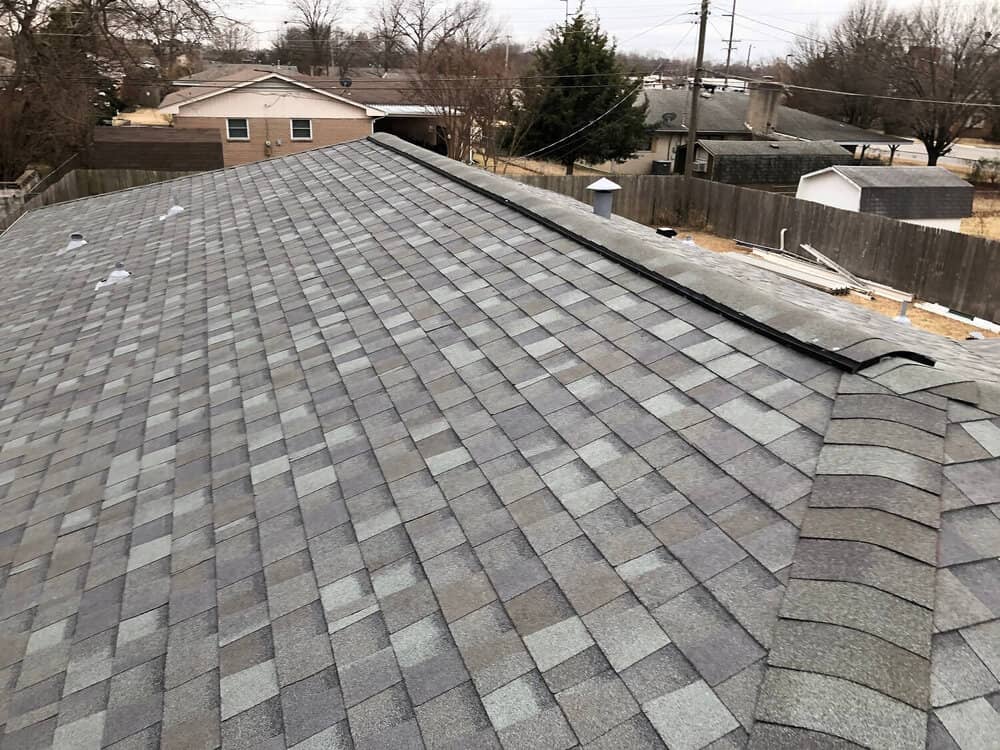
Best Roofing Vents Pros And Cons
Updated March 23, 2024
What to Know About the Best Types of Roofing Vents
As you begin the process of getting a new roof, you might be wondering, “What is the best roofing vent for my house?” When it comes to choosing new fixtures and products for your home, you’ll want to research each option before making a choice.
So, what are the best types of roofing vents?
- Static
- Turbine or whirlybird
- Ridge vent
Before we look at each type more in-depth, it’s important to know that mixing roof vents is not recommended. Also, to work effectively, all roof vents need an intake to fully work properly. You can ask our Tulsa roofing company if you have more questions about roof vents.
WHAT YOU SHOULD KNOW ABOUT STATIC VENTS
Static vents come in 2 different styles—a mushroom vent (550) and a box vent (750). These types of vents work independently of each other and are usually installed 1’ or 2’ below the roofline.
PROS
Static vents can be installed anywhere on the roof, and since they work independently, these vents can be installed on gable roofs and hip roofs. Static vents are economical to install.
CONS
One of the biggest issues with the mushroom (550) is that birds can easily break through the thin screen inside the vent. There are many cases of birds building nests inside of attics after having gained access to them through the mushroom-style vents. Another factor to consider is that a roof requires several of these vents. The problem that can arise with installing many vents is that leaks can occur if the vents are not installed properly.
What You Should Know About Turbine Vents or Whirlybird
 A turbine vent spins even when there are minimal winds, hence the word “turbine.”
A turbine vent spins even when there are minimal winds, hence the word “turbine.”
Pros
Turbine vents can move a lot of air and can move it quickly. Also, a roof that needs 12-14 vents will only need 3-4 turbine vents, lessening the chance of leaks. Turbine vents are extremely efficient and are the best solution on large gable roofs that don’t have a lot of area at the peak.
Cons
Over time, turbine vents can stop spinning. Once the vent stops spinning, it then becomes a basic static vent and loses its effectiveness. Many consider turbine vents to be an eyesore since they sit high up and spin.
What You Should Know About Ridge Vents
Ridge vents sit on top of the roof and come in 3-4’ lengths. Ridge vents are cut on the peak of the roof and are continuous on a roof from end to end.
Pros
Looks are what most people like about ridge vent. It blends in at the top of the roof and creates a clean look. The ridge vent is the most efficient vent out of all the vents. Since plywood is cut continuously from edge to edge at the peak of the roof, this creates an equal balance of air movement throughout the entire attic. Since the ridge vent is installed at the top, it eliminates most leaks that can occur with vents.
Cons
Price is the biggest con with ridge vents. To install it, all other vents must be filled in. Also, gable vents must be closed off, and an adequate intake must be installed. If any one of these guidelines is not followed, ridge vents will not work and will be a waste of money.
When considering the best type of ventilation to meet the needs of your home, the most important matter is that your roof receives adequate ventilation. Your contractor should follow the 1/300th rule to make sure your roof is properly ventilated, thereby maximizing the life of your shingles. Please don’t hesitate to reach out to us if you have any further questions. You can contact us here.
